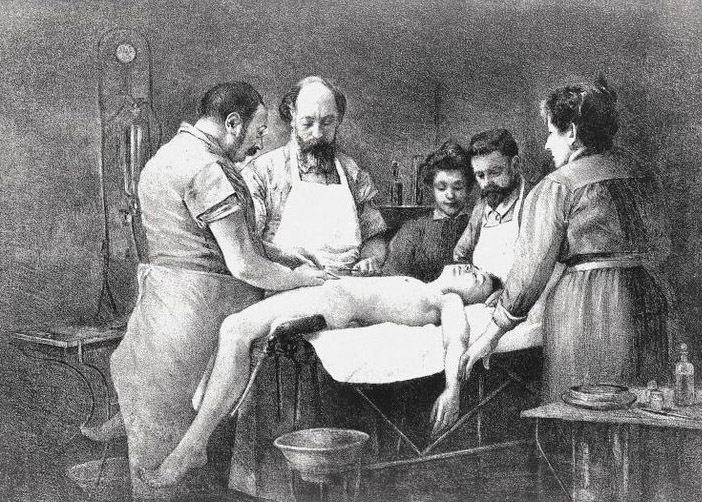Cheselden's forte
 Pierre Franco of Lausanne, in 1561, following a failed perineal lithotomy in a two-year-old child, sucessfully removed a stone suprapubically but, being wary of Hippocrates' rule that all abdominal bladder wounds were fatal, warned against subsequent attempts.
Pierre Franco of Lausanne, in 1561, following a failed perineal lithotomy in a two-year-old child, sucessfully removed a stone suprapubically but, being wary of Hippocrates' rule that all abdominal bladder wounds were fatal, warned against subsequent attempts.
Francis Rosset of Montpelier described and practised the operation on a dead body in 1590.
John Douglas, surgeon/lithotomist to the Infirmary at Westminster and brother of James Douglas, the renowned anatomist who described the peritoneum, realised that a full bladder could be safely opened suprapubically, below the peritoneal reflection. He devised his "New Operation" in 1719 and published it in 1723.

William Cheselden (pictured), after being taught by Douglas, also published the method in his “Treatise on the High Operation” in 1723 but generously credited John Douglas as being the first surgeon to practise the high operation upon living bodies.
Cheselden technique was to fill the bladder with warm barley water, connecting the syringe to the catheter by an ox's ureter. He used three knives: a convex round-edged one for the integument, a straight-edged one to lay the bladder bare and a curved, sharp-pointed, concave one to open it.
However, he soon abandoned the "High Approach" and devoted his skills to improving the technique of lateral lithotomy.
← Back to Cutting for the Stone